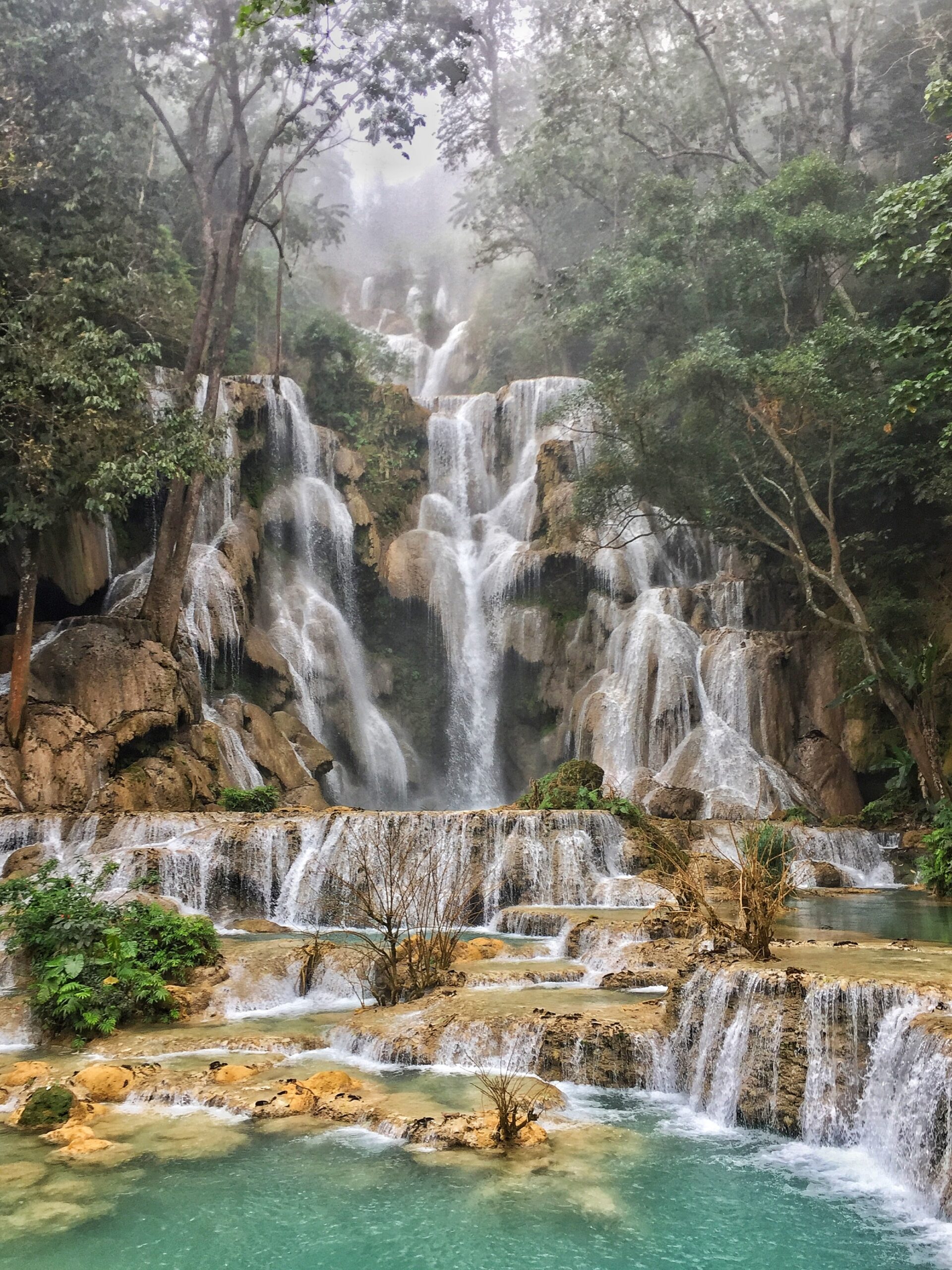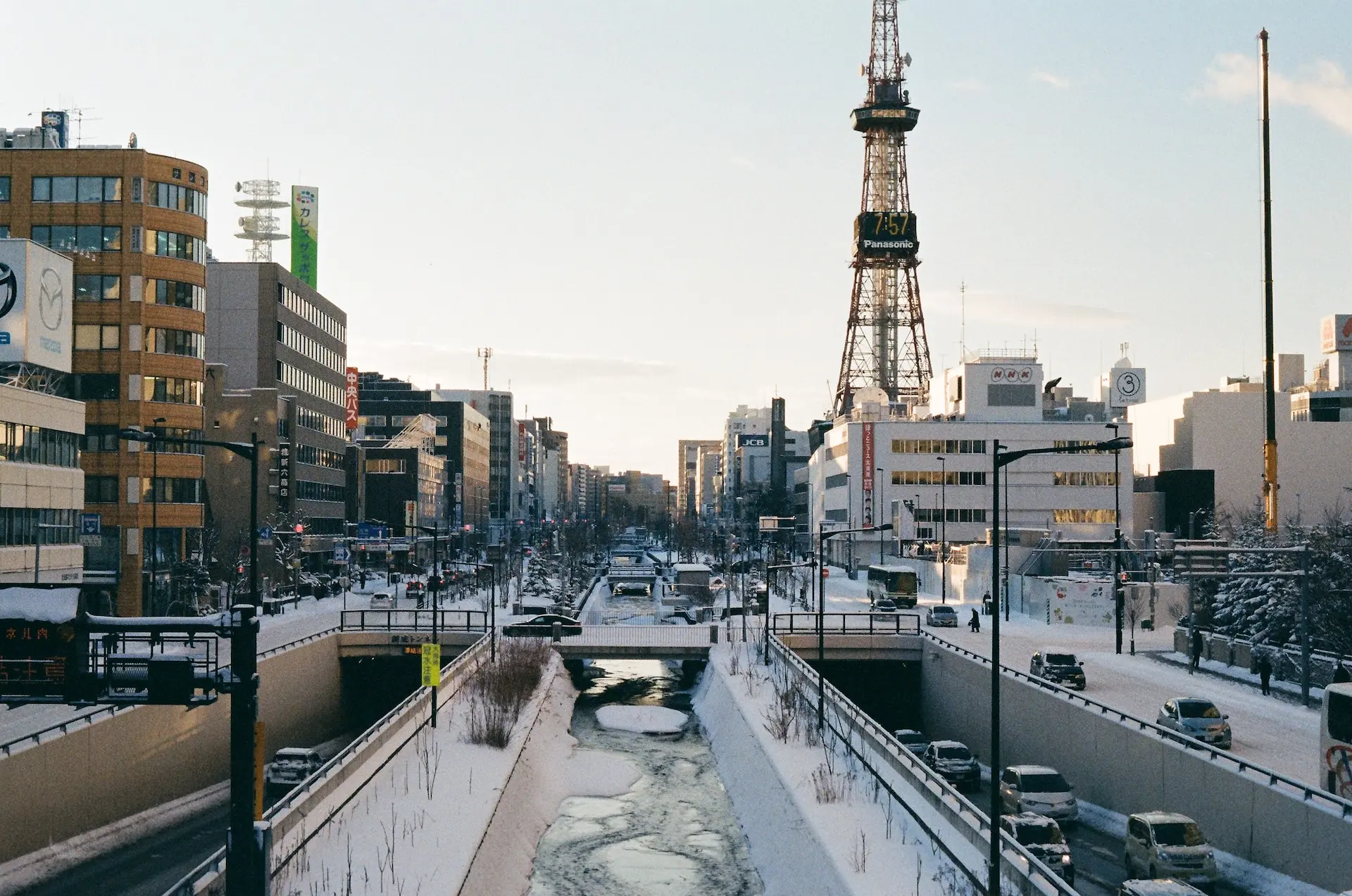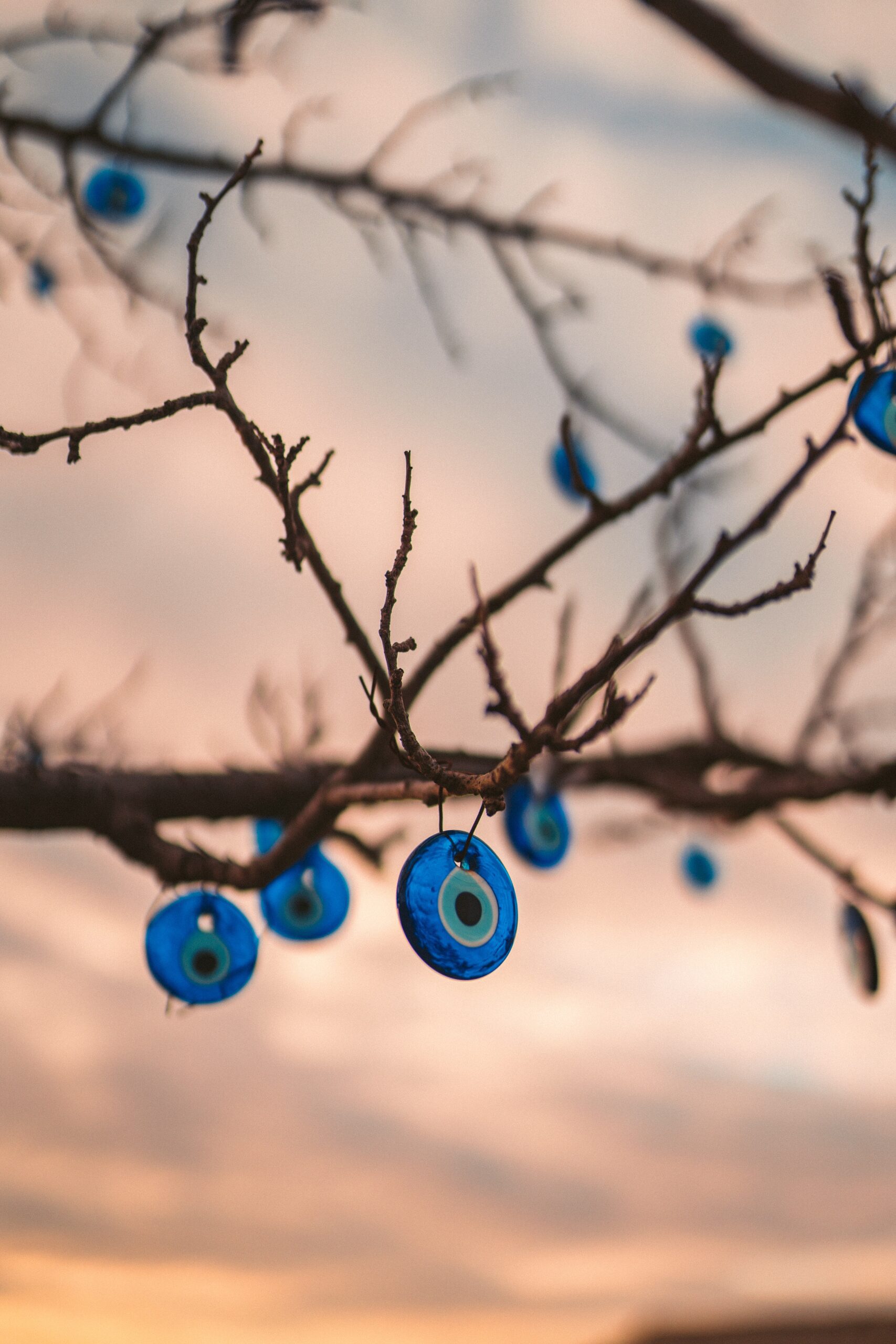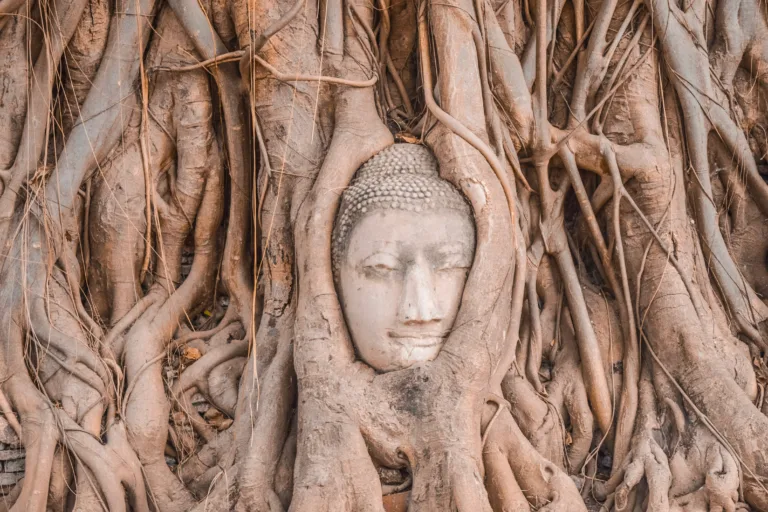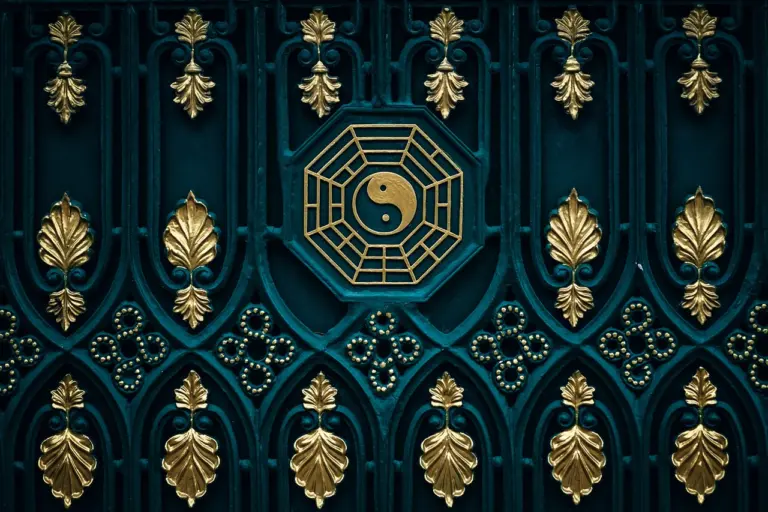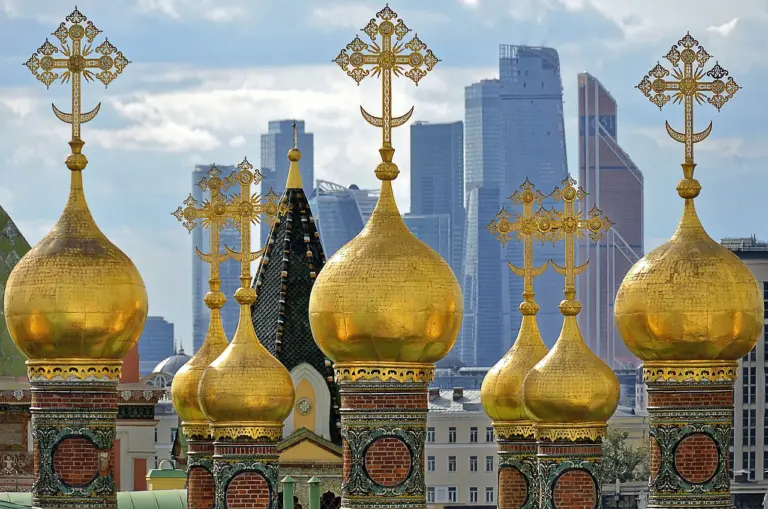Hiroshima.
A city that rose from the ashes of one of history’s darkest moments, stands today as a beacon of peace.
This city, once devastated by the atomic bomb in 1945, has transformed itself into a vibrant destination that embraces both its tragic past and its hopeful future.
But Hiroshima is not defined solely by its past. The city is alive with lush greenery, modern architecture, and a dynamic culture. The vibrant downtown area, with its bustling shopping streets, diverse cuisine, and lively entertainment scene, are definitely not to be missed!
Hiroshima presents a wonderful experience. It’s a city that tells a story of tragedy and triumph, a place where the past is honored and the future is embraced with enthusiasm.
As you explore Hiroshima, you’ll no doubt discover the spirit of a city that moves forward with stark determination.
Table of Contents
Toggle
History of Hiroshima
The origins of Hiroshima as a city can be traced back to 1589, when a feudal lord built Hiroshima Castle on the delta of the Ota River. The city grew as a castle town during the Edo period, becoming an important seat of power in the Chugoku region.
Throughout the centuries, Hiroshima developed as a hub of traditional Japanese culture and as a center for the rice trade, benefiting from its productive hinterland and its access to the sea.
However, Hiroshima’s history took a tragic turn on August 6, 1945, when it became the first city in the world to suffer a nuclear attack.
The atomic bomb dropped by the U.S. Air Force obliterated the city, causing unprecedented destruction and loss of life.
In the aftermath of the bombing, Hiroshima faced the daunting task of rebuilding. The city’s resurrection is a remarkable story of determination and unity. Rather than seeking retribution, Hiroshima dedicated itself to becoming a symbol of peace and a beacon for the elimination of nuclear weapons.
Best Places to Visit in Hiroshima

1. Peace Memorial Park
The Hiroshima Peace Memorial Park is a powerful symbol of the city’s commitment to peace and its resilience in the face of tragedy.
This park, built on an area that was once the epicenter of the atomic bomb blast, serves as a solemn reminder of the horrors of war and a hopeful pledge for a future without nuclear weapons.
You can find plenty of must-visit sights in this area including the Atomic Bomb Dome, the Children’s Peace Monument, Peace Memorial Musuem, many of which will be covered on this guide.
The park also includes the Cenotaph for the A-bomb Victims, an arched tomb holding the names of all known victims of the bombing.
The Hiroshima Peace Memorial Ceremony, held annually on August 6th, is an event attended by dignitaries, survivors, and visitors from around the world.

2. Atomic Bomb Dome
The Atomic Bomb Dome is one of the most iconic and significant landmarks in Hiroshima. Originally known as the Hiroshima Prefectural Industrial Promotion Hall, this structure was directly beneath the explosion of the atomic bomb on August 6, 1945, and was one of the few buildings to partially survive the blast.
The Dome’s haunting, skeletal structure serves as a visceral reminder of the destructive power of the atomic bomb. Its exposed metal framework and crumbling walls stand in stark contrast to the modern cityscape of Hiroshima, offering a powerful juxtaposition between past and present, destruction and rebirth.
Declared a UNESCO World Heritage Site in 1996, the Atomic Bomb Dome has since been preserved in its post-bombing state.

3. Shukkeien Garden
Translating to “shrunken-scenery garden,” Shukkeien perfectly encapsulates the essence of Japanese aesthetics in its meticulous design, where every element is a miniature reflection of the natural world.
Dating back to 1620, the garden was originally constructed by Ueda Soko, a renowned tea ceremony master, for the local daimyo (feudal lord). The design of Shukkeien is inspired by the traditional Chinese landscaping techniques, which focus on capturing the essence of nature in a compact form.
As you wander through the garden, you’ll find miniature valleys, mountains, and forests, all recreated on a small scale, with a central pond that weaves through the landscape, representing the ocean.

4. Hiroshima Castle
Hiroshima Castle, also known as Carp Castle, was originally built in the 1590s by Mori Terumoto, a powerful feudal lord, the castle played a crucial role in the region’s politics and military history until the Meiji Restoration in the late 19th century.
Although the original structure was destroyed by the atomic bomb in 1945, it was meticulously reconstructed in 1958.
The castle’s five-story main keep, elegantly rising above the surrounding area, is a fine example of Japanese castle architecture. It now functions as a museum, offering insights into Hiroshima’s history, Japanese castles, and samurai culture.
The view from the top of the castle’s main keep is another highlight, offering panoramic vistas of Hiroshima city and the surrounding areas!

5. Hiroshima Peace Memorial Museum
The Hiroshima Peace Memorial Museum is a profoundly moving institution dedicated to educating visitors about the horrors of nuclear warfare. It’s here where you would most likely end up shedding some tears just as we have.
The museum’s exhibits are divided into two main sections. The East Building focuses on the history of Hiroshima, the development and dropping of the atomic bomb, and the devastating impact it had on the city and its inhabitants.
The West Building, on the other hand, delves into the effects of nuclear weapons, including the physical, emotional, and social consequences for the survivors, known as hibakusha. This part of the museum also explores the efforts toward nuclear disarmament and the ongoing challenges posed by nuclear weapons globally.

6. Hiroshima Botanical Garden
The Hiroshima Botanical Garden is a sprawling and serene oasis that offers a delightful escape into nature!
Established in 1976, the Hiroshima Botanical Garden is divided into several sections, each dedicated to different types of plants and landscapes. These include a Japanese garden, a greenhouse complex, a rock garden, and an area for seasonal flowers, among others.
In addition to its botanical attractions, the garden also offers recreational facilities, making it a perfect spot for family outings. Picnic areas, playgrounds, and walking trails are readily available to enjoy a day out in the midst of nature.

7. Hiroshima Museum of Art
The Hiroshima Museum of Art, established in 1978, was founded with the aim of promoting art as a beacon of hope in the aftermath of the atomic bombing.
The museum boasts an impressive collection of modern European art, with a particular emphasis on French Impressionist and post-Impressionist works. The collection includes masterpieces by renowned artists such as Monet, Renoir, Degas, and Picasso.
In addition to its European collection, the Hiroshima Museum of Art also features works by Japanese Western-style painters, bridging the gap between Eastern and Western art traditions.
Best Tours in Hiroshima
There are tons of culturally rich and interactive experiences you can join while in Hiroshima, here are some of the most highly-rated ones:
- Peace Walking Tour of World Heritage Sites – Pick up insights into the history of Hiroshima. See how life was after the atomic bomb compared to today. Enjoy a spectacular view while eating lunch and ruminate on the past, present, and future of this city.
- City Reconstruction History E-Bike Tour – Ride an electric bicycle on a guided tour and learn about the reconstruction of Hiroshima’s bombed heritage sites. Hear how peace is protected in the city with a visit to the Peace Memorial Park.
- Cultural Experience in a Kimono in Miyajima – Enjoy your choice of a tea ceremony, a calligraphy lesson, or both while wearing a traditional kimono at the 300-year old temple of Miyajima. Just one street away from the tourist area, enjoy the quiet and relaxing atmosphere of the temple.
- Traditional Japanese Archery Experience – Discover kyudo, a Japanese martial art. Try your hand in a style of archery which requires complete focus of mind and body. Benefit from a brief explanation of the art of kyudo as well as detailed instructions throughout the experience.
- Early Morning Hiking Tour with Tea Ceremony – Feel the early morning air of Futaba Mountain on this hiking trip with an optional lunch. Enjoy an outdoor tea ceremony and a forest bathing atop the mountain with views of Hiroshima.
Hidden Gems in Hiroshima

8. Flame of Peace
The Flame of Peace was lit on August 1, 1964, and it has been burning continuously since then. It is situated in a fountain, designed by Kenzo Tange, which is shaped like two hands pressed together at the wrists and pointing towards the sky. The flame rises from the center, symbolizing both the wish for nuclear abolition and the enduring hope for world peace.
The monument’s design and the ever-burning flame carry a profound message: the flame will continue to burn until the day when all nuclear weapons are abolished and the world is free from the threat of nuclear war. This commitment makes the Flame of Peace a global symbol of the anti-nuclear weapons movement and the pursuit of lasting peace.

9. Children's Peace Monument
The Children’s Peace Monument, also known as the “Tower of Thousand Cranes,” is a touching tribute to all the children who lost their lives due to the atomic bombing, and it is especially dedicated to the memory of Sadako Sasaki, a young girl who became a symbol of the innocent victims of nuclear warfare.
Sadako Sasaki was two years old when the atomic bomb was dropped on Hiroshima. She survived the initial blast but, a decade later, developed leukemia as a result of the radiation exposure. Inspired by the Japanese legend that one who folds a thousand origami cranes will be granted a wish, Sadako embarked on a mission to fold a thousand cranes, hoping for her own recovery and for world peace.
Sadly, Sadako passed away in 1955 at the age of 12, but her story sparked a global peace movement.
The monument, unveiled in 1958, features a statue of Sadako holding a golden crane above her head. Designed by Kazuo Kikuchi and Kiyoshi Ikebe, the statue conveys a sense of resilience. At the base of the monument, there is a bell shaped like a folded crane, which you can ring in memory of the children.
Surrounding the monument are glass cases filled with thousands of colorful origami cranes sent by people from around the world.

10. Hiroshima National Peace Memorial Hall
Inaugurated in 2002, the architecture of the Hiroshima National Peace Memorial Hall is profoundly symbolic. Designed by architect Kenzo Tange, the facility is partially underground, signifying the depth of sorrow and loss caused by the atomic bomb.
The entrance is marked by a clock frozen at 8:15 AM, the exact time when the bomb detonated over Hiroshima.
Inside, the Hall of Remembrance provides a quiet space to reflect on the victims of the bombing. The hall contains a 360-degree panorama of the destroyed city, created from 140,000 tiles – the estimated number of people who had died from the bombing by the end of 1945.
This panorama, along with the names and photographs of the victims, offers a deeply personal and emotional connection to those who suffered and perished.
Top Things to Do in Hiroshima

11. Pray at Mitaki-dera
Mitaki-Dera, often regarded as one of Hiroshima’s hidden treasures, is a serene Buddhist temple located in the western hills of the city.
The name “Mitaki” translates to “Three Waterfalls,” referring to the temple’s picturesque setting amidst three sacred waterfalls. Established in the late 9th century, Mitaki-Dera is dedicated to Kannon, the Goddess of Mercy.
The temple is a part of the Shingon sect of Japanese Buddhism and is known for its tranquil atmosphere, enhanced by the lush forest and the soothing sound of the waterfalls.
The walk to the temple itself is a peaceful journey, with paths winding through verdant woods and alongside clear streams.

12. Try Out Hiroshima Okonomiyaki
Okonomiyaki, often described as a Japanese savory pancake, is made with a variety of ingredients that typically include batter, cabbage, pork, seafood, and topped with a sweet-savory sauce.
What sets Hiroshima-style Okonomiyaki apart from its counterparts, like the Osaka-style, is its distinctive layering method.
In Hiroshima-style Okonomiyaki, the ingredients are not mixed together but are instead layered. It starts with a thin crepe-like batter spread on a hot griddle, followed by a generous amount of cabbage, bean sprouts, slices of pork, and other optional items like squid or octopus.
The highlight is the layer of noodles, which are either yakisoba (fried noodles) or sometimes udon, giving the dish an extra texture and heartiness. Finally, it’s topped with an egg and a special Okonomiyaki sauce, which is sweet, tangy, and rich in flavor!

13. Take a Ferry to Miyajima
Miyajima is a highly recommended excursion when visiting Hiroshima. Miyajima, formally known as Itsukushima, is a picturesque island in the Seto Inland Sea, known for its breathtaking scenery, rich cultural heritage, and its famous “floating” torii gate.
The island is considered one of Japan’s most scenic spots! If you’re keen, you can opt to join a tour that explores both Hiroshima and Miyajima through here.
Just like Nara, you’ll be greeted by the island’s friendly deer population, which roams freely around the island. One of Miyajima’s most iconic sights is the Itsukushima Shrine with its giant torii gate, which at high tide appears to be floating on the water. This centuries-old Shinto shrine, a UNESCO World Heritage Site, is a must-see!
To learn more about Miyajima, you can check out my article.
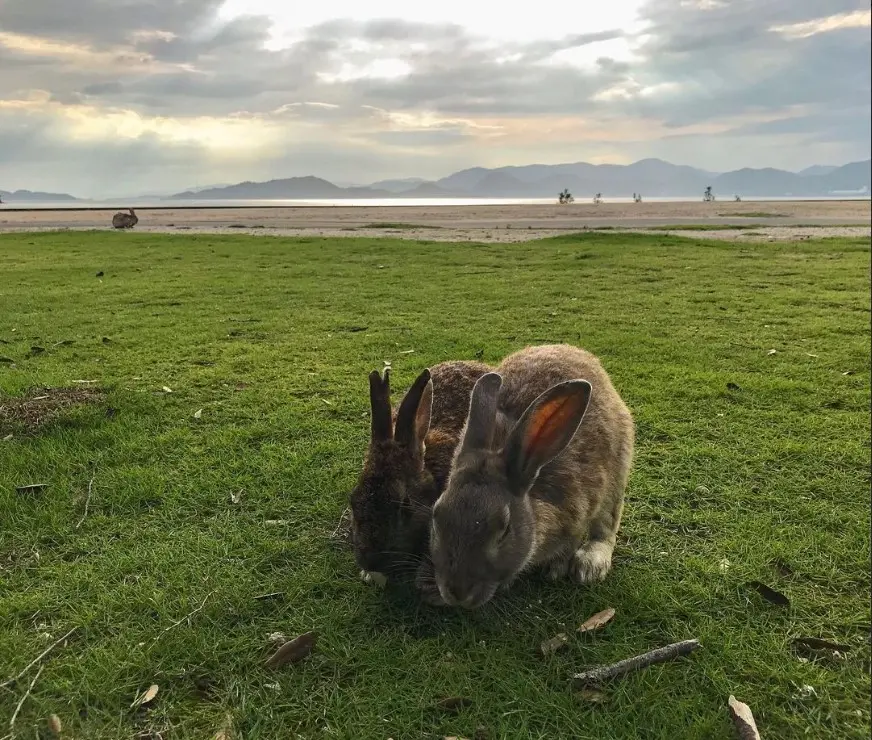
14. Play with Rabbits at Okunoshima
Okunoshima, often referred to as “Rabbit Island,” is a charming destination located in the Inland Sea. This small island has gained fame for its large population of friendly, wild rabbits that roam freely.
The rabbits on Okunoshima are accustomed to human visitors and are known for their friendly demeanor. Okunoshima’s history, however, has a darker side.
During World War II, the island was used as a production site for chemical weapons, and its past was kept secret for many years.
Apart from playing with rabbits, Okunoshima offers several other attractions. The island features walking trails, beautiful beaches, and historical sites, including the remains of the poison gas facilities. There’s also a hotel and a camping ground for those wishing to stay overnight.
If you’re keen on visiting, do check out the Okunoshima Travel Guide.

15. Stroll Around Hiroshima Toshogu Shrine
Located within the verdant Shukkeien Garden, this Shinto shrine is dedicated to Tokugawa Ieyasu, the founder of the Tokugawa shogunate in Japan, is a part of a network of Toshogu shrines spread across Japan, including the most famous one at Nikko with the Three Wise Monkeys.
These shrines honor Ieyasu, who played a pivotal role in Japanese history by unifying the country after a long period of civil war.
The architecture of Hiroshima Toshogu is characteristic of Toshogu shrines, featuring ornate carvings, gold leaf decorations, and traditional design elements.

16. Visit the Hiroshima Prefectural Museum
The Hiroshima Prefectural Museum provides a comprehensive overview of the region’s diverse aspects, from its geological formations and ecosystems to its historical development and artistic contributions.
The museum’s exhibits are divided into several sections, each dedicated to different themes. One of the main focuses is on the natural history of Hiroshima, including its geology, flora, and fauna.
Another significant part of the museum is devoted to the cultural history of Hiroshima. This includes exhibits on traditional crafts, regional customs, and historical artifacts that tell the story of the people who have lived in this area throughout the centuries.
The museum also features art exhibitions, displaying works by local artists as well as pieces that represent the broader artistic trends of Japan.
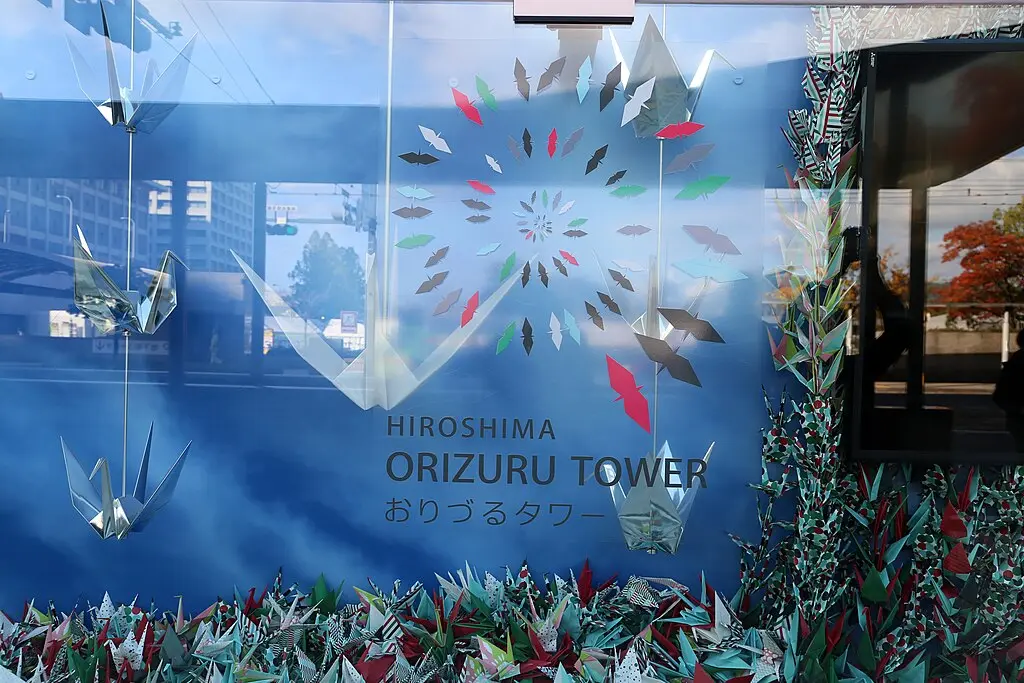
17. Catch the Sunset at Orizuru Tower
Orizuru Tower, standing 50 m (164 ft) tall, is named after the Japanese word for “folded paper crane,” inspired by the story of Sadako Sasaki.
The tower features an observation deck at the top, providing panoramic views of Hiroshima city and at sunset, it’s just marvelous.
You’ll also have the opportunity to fold your own paper crane and drop it into the tower’s glass-covered wall, joining thousands of colorful cranes left by visitors from around the world.
Where to Stay in Hiroshima
An overnight stay in Hiroshima gives you plenty of time to not just explore the city’s main sights but also the nearby islands such as Miyajima and Okunoshima, the Rabbit Island which was one of the highlights for our visit! Here are some of the most highly-rated places to stay in Hiroshima:
Best Hotels in Hiroshima:
- The Knot Hiroshima – offers comfortable, air-conditioned rooms with amenities like free WiFi, a terrace, and an on-site restaurant. This 4-star establishment ensures round-the-clock front desk service and luggage storage, along with private parking facilities. Each room in the hotel is furnished with a flat-screen TV, a private bathroom complete with a bidet and complimentary toiletries.
- Daiwa Roynet Hotel Hiroshima-ekimae – provides air-conditioned rooms and boasts a range of facilities including a restaurant, a 24-hour front desk, a shared lounge, and complimentary WiFi. The hotel also offers a buffet breakfast for guests to enjoy.
- Hotel Intergate Hiroshima – air-conditioned rooms with complimentary WiFi and private parking. The hotel features a shared lounge, a 24-hour front desk, and guest luggage storage services. Each room is equipped with a flat-screen TV, a safety deposit box, and a private bathroom with a bidet, free toiletries, and a hairdryer, along with bed linen and towels. Guests can start their day with a diverse breakfast selection, including buffet, Full English/Irish, or American options.
Best Hostels in Hiroshima:
- J-Hoppers Hiroshima Guesthouse – offers both private and dormitory-style rooms, the latter resembling a capsule hotel for enhanced privacy. Private rooms feature traditional Japanese tatami mats and futons, while dorms are equipped with personal amenities like bed lights and plug outlets. Facilities include a communal kitchen, shower rooms, and a cozy common area with a TV lounge and rooftop terrace.
- Guest House Roku – comes with both private rooms with futon bedding and dormitory accommodations, including mixed and female-only options with bunk beds. Facilities include shared bathrooms and toilets, and a communal kitchen where you can cook and share their experiences. Free Wi-Fi, 24-hour bathroom access, free luggage storage and lockers, and a daily welcome drink. Amenities provided include bath towels, face towels, and adaptors.
- WeBase Hiroshima – part of the WeBase Hostel and Hotel group with locations in places like Kamakura and Kyoto, aims to be a community-centered hub connecting young global travelers and locals. The facility offers accommodation with a shared lounge and free WiFi.

How to Get Around Hiroshima
Getting around Hiroshima is really convenient, here are some of the best ways to navigate the city:
Streetcars: Hiroshima is famous for its extensive streetcar system. These trams cover most of the main areas, including tourist attractions such as Hiroshima Peace Memorial Park and Miyajima ferry terminal.
Buses: Buses in Hiroshima complement the tram routes and provide access to areas not served by the streetcar system. They are particularly useful for reaching destinations that are a bit further out, such as the Hiroshima Prefectural Museum.
Rental Bicycles: Hiroshima is a bike-friendly city with several rental bike services available, including Hiroshima’s “Peacecle” bicycle sharing program.
Taxis: Taxis are readily available throughout Hiroshima and are a convenient option for direct and comfortable travel, especially if you’re traveling in a group or have a lot of luggage. However, they are generally more expensive.

Best Time to Visit Hiroshima
The besttimes to visit Hiroshima are during the Spring, from late March to May, and the Autumn, from September to November.
In spring, temperatures range from 10°C – 20°C (50°F – 68°F), this season is particularly beautiful with the cherry blossoms in full bloom.
Autumn in Hiroshima is equally delightful, with temperatures hovering between 15°C – 25°C (59°F – 77°F). The fall foliage transforms the city’s landscapes into vibrant hues of red, orange, and yellow, offering stunning natural backdrops for walks and photos. This season is also less crowded than spring, making it a great time for a more relaxed visit.

How to Get to Hiroshima
Getting to Hiroshima is straightforward, thanks to Japan’s extensive transportation network. Here are the primary ways to reach Hiroshima from major cities in Japan:
From Tokyo:
By Air: The fastest way to get to Hiroshima from Tokyo is by air. Flights from Tokyo’s Haneda or Narita Airport to Hiroshima Airport take about 1.5 hours. From Hiroshima Airport, you can take a limousine bus to Hiroshima city center, which takes about 45 – 50 minutes. This is what we ended up doing as the prices are not so different compared to the Shinkansen, even cheaper.
By Shinkansen (Bullet Train): From Tokyo Station, take the Tokaido/Sanyo Shinkansen to Hiroshima Station. The journey takes about 4 hours on the Nozomi, the fastest Shinkansen, and a bit longer on the Hikari or Kodama services.
From Osaka/Kyoto:
- By Shinkansen: From Shin-Osaka Station or Kyoto Station, take the Sanyo Shinkansen to Hiroshima. The journey takes about 1 hour and 30 minutes from Shin-Osaka and about 1 hour and 40 minutes from Kyoto.
Plan Your Trip to Hiroshima | Best Travel Resources
Book Your Accommodations
- Booking.com – the world’s leading online booking platform for accomodations around the world, they have an extensive amount of available listings with zero booking fees and best price guarantees.
- Hostelworld – a backpacker’s best friend, Hostelworld has the largest collection of hostels and guesthouses for affordable prices.
Don’t Forget Insurance
- SafetyWing – from Nomad Insurance, an insurance by nomads for nomads. They understand our lifestyle well and have really comprehensive and flexible plans that cater to any traveler.
Find Cheap Flights
- Kiwi.com – my go-to for booking and finding the cheapest flights and it’s helped me save tons of money. They do virtual interlining which is connecting flights from airlines that do not codeshare, so you can find routes that you wouldn’t be able to find normally.
Join Tours & Activities
- GetYourGuide – is one of the best places to find unique tours and activities. I found that it’s an excellent way to meet fellow travelers and create fond memories. They are not only limited to tours as they also offer niche services such as skip-the-line tickets or private transfers.
Catch a Ride
- Rentalcars.com – nothing beats the freedom of the road, Rentalcars.com is the world’s largest online car rental service. They operate across 160 countries so they’re the perfect partner to work with if you find yourself wanting a ride.

